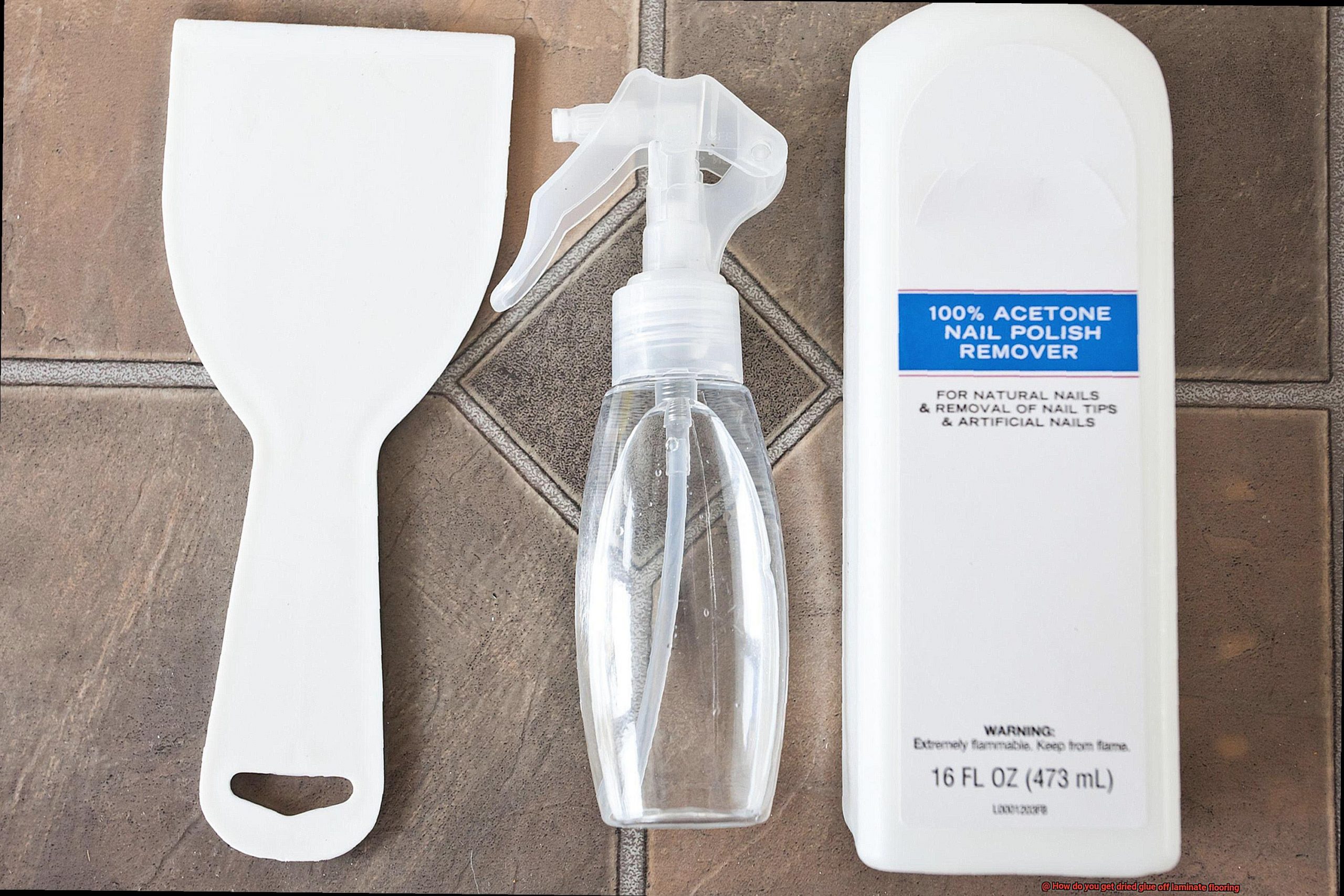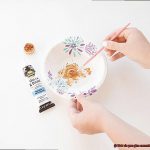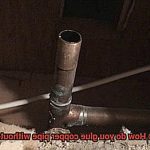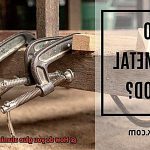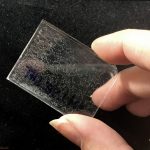Picture this: you’re gazing at your stunning laminate flooring, the epitome of elegance and sophistication in your home. But wait. What’s that? A stubborn, dried-up glue stain mocking your pristine surroundings. Cue frustration. Fear not, my friend. Whether it’s an accidental spill or remnants from a DIY project, getting rid of dried glue on laminate flooring doesn’t have to be a herculean task.
Join us on an adventure as we unveil tried-and-true methods to conquer this perplexing predicament. We’ll explore practical solutions, uncover expert tips, and deliver foolproof techniques to save your cherished laminate flooring from the clutches of unsightly glue marks.
What to Expect:
- Say Goodbye to Sticky Stains: Get ready for effective techniques that loosen the grip of dried glue on your laminate flooring. Discover the delicate balance between gentle solutions and more powerful remedies when necessary.
- The Art of Patience: Learn why patience is key and rushing could make things worse. Understand the need for perseverance when aiming for optimal results without damaging your beautiful flooring.
- Tools of the Trade: Arm yourself with essential tools and materials needed to tackle those dreaded dried glue stains head-on. From everyday household items to specialized glue removal products, we’ll guide you in choosing the perfect arsenal to wage war against this adhesive enemy.
Conclusion:
Contents
- 1 Types of Glue
- 2 Scraping Off the Dried Glue
- 3 Using Solvents to Remove the Glue
- 4 Heat as an Option for Removing Dried Glue
- 5 Cautions and Considerations When Removing Dried Glue
- 6 Different Methods for Different Types of Glue
- 7 How to Test Solvents Before Use on Laminate Flooring
- 8 Applying Heat Safely to Remove Dried Glue from Laminate Flooring
- 9 Conclusion
Ready to restore your laminate flooring’s allure? Look no further. With our expert advice and step-by-step instructions, you’ll have the knowledge and confidence necessary to bid farewell to pesky dried glue stains. No more hiding those blemishes under rugs or furniture – it’s time to reclaim the beauty of your laminate flooring and rejoice in a spotless, glue-free environment. Let’s embark on this journey together and conquer those sticky situations once and for all.
Types of Glue
The right glue can make all the difference when it comes to installing or repairing laminate flooring. With various options available, understanding the characteristics of each type is crucial. In this comprehensive guide, we will explore the different types of glue used on laminate flooring and what sets them apart.
- PVA Glue: Also known as white glue or wood glue, PVA glue is a popular choice for laminate flooring installation. This water-based adhesive boasts strong bonding capabilities, making it ideal for securely bonding laminate tiles or planks. The best part? PVA glue dries clear, leaving no visible residue behind. Its ease of use and reliable bond make it a top choice among DIY enthusiasts and professionals alike.
- Epoxy Glue: When it comes to heavy-duty applications, epoxy glue is often the go-to option. Comprising two components – a resin and a hardener – epoxy glue creates an incredibly strong and durable adhesive when mixed together. This adhesive is resistant to moisture and heat, making it perfect for areas with high traffic or exposure to moisture. Although slightly more challenging to work with due to its fast-setting nature, epoxy glue provides unmatched durability.
- Manufacturer-Recommended Glues: Some laminate flooring manufacturers offer specific glues designed to complement their products perfectly. These glues are formulated to provide optimal adhesion and compatibility with the laminate flooring material. Following the manufacturer’s recommendations ensures a successful installation and guarantees that you’re using the best adhesive for your specific laminate flooring.
- Specialty Glues: In addition to general-purpose options, there are specialty glues available for specific purposes related to laminate flooring. For instance, there are glues specifically designed for repairing small chips or cracks in the flooring surface. Additionally, there are glues tailored for installing transition strips or moldings, ensuring a flawless and professional finish.
- Pre-Applied Adhesive: Some laminate flooring options come with pre-applied adhesive on the edges or backside of the planks. These types of flooring often feature a “click-lock” or “glueless” installation system, eliminating the need for additional glue. Before considering other types of glue, it’s vital to check whether your laminate flooring already has pre-applied adhesive.
When selecting a glue for your laminate flooring project, take into account factors such as the type of laminate flooring, the location and conditions of the installation area, and the level of traffic or moisture exposure. Following the manufacturer’s recommendations or consulting with a professional can provide valuable guidance in choosing the most suitable glue for your specific needs.
In conclusion, understanding the various types of glue used on laminate flooring is essential for a successful installation or repair. Whether you opt for PVA glue, epoxy glue, manufacturer-recommended glues, or specialty glues, selecting the right adhesive ensures a strong and long-lasting bond.
Scraping Off the Dried Glue

Picture this: a pristine laminate floor marred by the unfortunate presence of dried glue. Fear not, for I am here to guide you through the exhilarating process of scraping off that stubborn adhesive. Grab your plastic putty knife and let’s embark on a thrilling journey to restore your floors to their former glory.
Step 1: Patience is Virtue – Ensure Complete Drying and Hardening
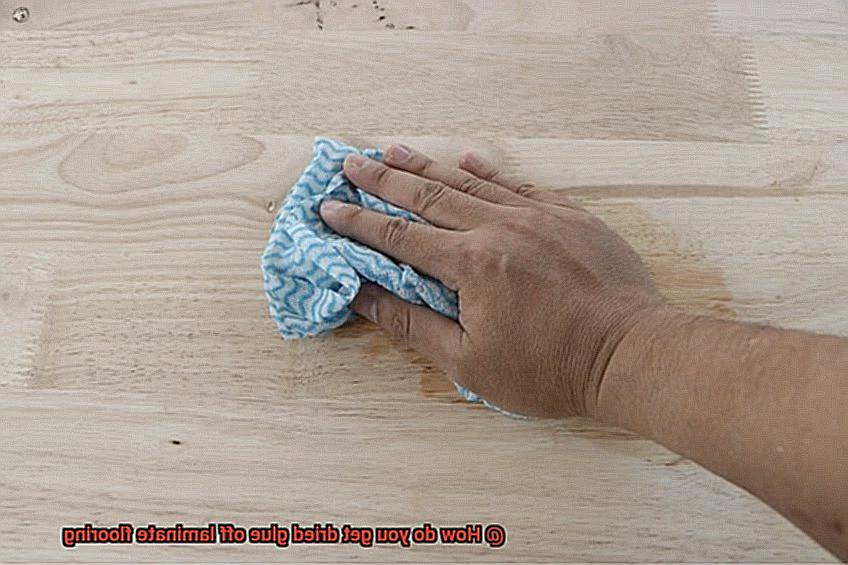
Before we dive into the scraping frenzy, take a moment to ensure that the glue is thoroughly dried and hardened. Attempting to scrape off wet or partially dried glue is a recipe for disaster, my friend. Let’s give that glue some time to reach its full potential.
Step 2: Assemble Your Arsenal – The Essential Tools
No battle is won without the right weapons. In this case, a plastic putty knife or scraper is your trusted companion. Its gentle touch is less likely to mar the beauty of your laminate flooring. Remember, metal tools are the enemy here – their mark will remain as a scar on your floors.
Step 3: Slide and Lift – Embrace the Technique
Now it’s time to put your skills to the test. Position the blade of your putty knife at an angle, almost parallel to the floor surface. With determination in your eyes, gently slide it under the dried glue, applying moderate pressure. Gradually lift and scrape off the glue, but be cautious not to dig too deep into the laminate. We want victory, not collateral damage.
Step 4: Taming Stubborn Glue – The Warm Embrace
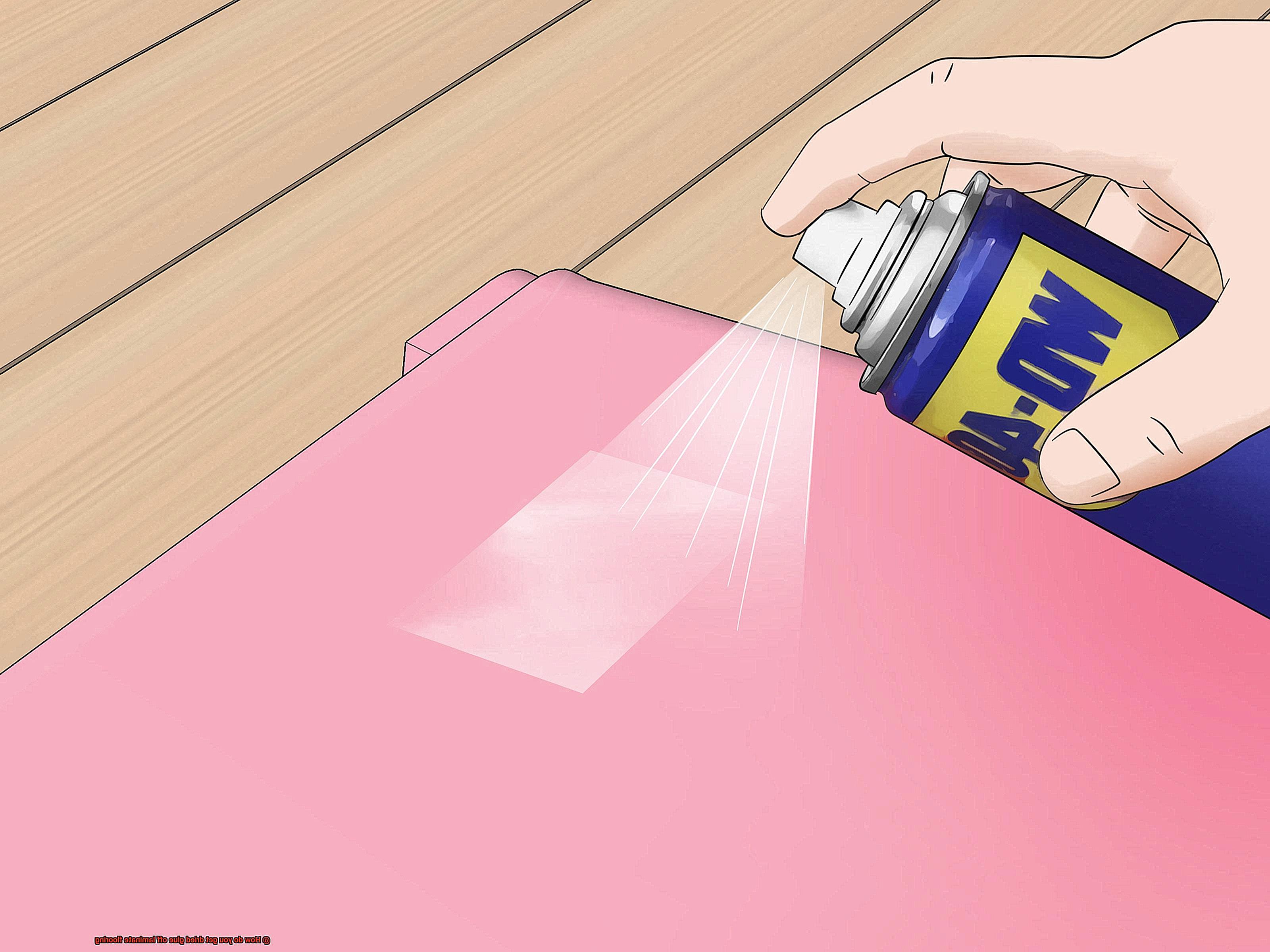
Some glues are relentless foes, requiring extra persuasion to surrender. If you find yourself locked in a battle with stubborn adhesive, unleash the power of a hairdryer set on low heat. The gentle warmth will soften the glue, making it easier to scrape off. Beware of excessive heat – we seek a clean battlefield, not melted laminate.
Step 5: Cleanliness is Next to Gluelessness
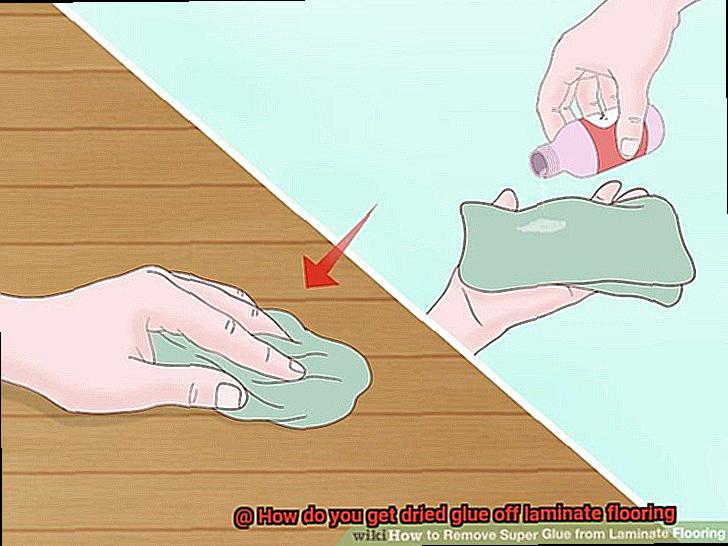
As you valiantly scrape away the dried glue, remember to keep your tools clean. Periodically wipe off any residue from your scraping tool using a damp cloth or sponge. This prevents the enemy from regrouping and transferring back onto your floor during the fierce scraping process. We shall leave no trace of their presence.
Using Solvents to Remove the Glue
Imagine the satisfaction of completing a DIY project, only to be faced with a sticky dilemma – dried glue on your pristine laminate flooring. Fear not, for we are here to unveil the enchanting world of solvents and their prowess in bidding farewell to stubborn adhesives.
Prepare yourself for an odyssey through the captivating process of using solvents to effortlessly eradicate glue from laminate flooring.
So, grab your lab coat (or just a clean cloth) and embark on this fascinating journey.
The Mighty Acetone: Unleash its Power.
In our quest to conquer dried glue on laminate flooring, acetone emerges as our valiant hero. As an integral component of most nail polish removers, this highly effective solvent possesses remarkable properties. However, before you embark on this magical solution, it is imperative to test it inconspicuously. We must ensure that no damage or discoloration befalls our beloved laminate flooring.
The Art of Application:
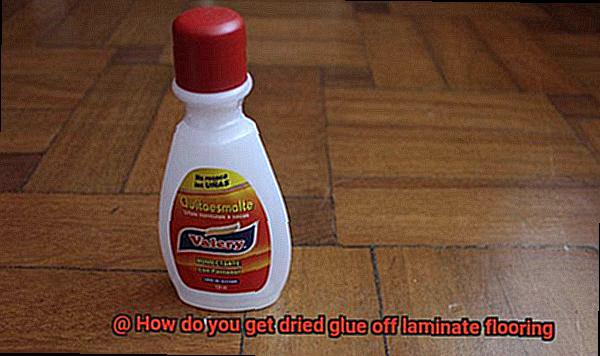
To harness the power of acetone, delicately apply a small amount onto a clean cloth. With gentle strokes, caress the glue until it succumbs to dissolution. Remember, a tender touch is key; avoid aggressive scrubbing that may harm the delicate laminate surface. If the glue persists stubbornly, enlist the aid of a plastic scraper or a soft-bristled brush to loosen its tenacious grip.
Embracing Rubbing Alcohol as a Trusted Ally:
When acetone’s charm falls short against the resilient adhesive, rubbing alcohol emerges as our steadfast companion. Apply a modest amount to a clean cloth and gently massage the glue until it relinquishes its hold. Yet, let us not forget the cardinal rule – test it discreetly first to ensure no unwelcome surprises mar our efforts.
Mineral Spirits: An Unyielding Backup Plan:
In the face of unyielding glue, mineral spirits emerge as our formidable backup plan. Employ a small amount on a clean cloth and tenderly massage the glue until it surrenders its grip. Remember to provide ample ventilation, for the potent fumes of mineral spirits demand respect. Adhere strictly to the manufacturer’s instructions and safety guidelines to ensure triumph over adversity.
Heat as an Option for Removing Dried Glue
Imagine the frustration of discovering dried glue stains on your pristine laminate flooring after a successful DIY project. But fear not. In this exhilarating journey, we will delve into the enchanting world of heat as a formidable tool for effortlessly banishing dried glue from your laminate flooring. So, gear up and prepare to witness the magic unfold.
Chapter 1: Unveiling the Science
Before we embark on this adventure, let’s unravel why heat is the superhero in our battle against dried glue. When glue dries, it becomes a hardened, unyielding force that clings to surfaces with tenacity. However, the application of heat softens the glue, transforming it into a more compliant adversary. It’s like using warmth to coax the glue into surrendering.
Chapter 2: Method 1 – The Hairdryer Marvel
Our first method calls upon the trusty hairdryer, a true champion in its own right. Here’s how this magnificent tool can come to your rescue:
- Activate the hairdryer, setting it to its highest heat setting.
- Position the hairdryer a few inches away from the dried glue.
- Direct the scorching air towards the targeted area, employing a gentle back-and-forth motion to ensure even distribution of heat.
- As minutes pass and heat works its wonders, marvel at the sight of the once unyielding glue softening under its persuasive influence.
Chapter 3: Method 2 – The Enchanting Hot Towel Ritual
For those who prefer a more delicate approach, fear not. Our second method involves harnessing the power of a hot towel or cloth:
- Acquire a clean towel or cloth and immerse it in hot water.
- Squeeze out any excess water, ensuring a controlled level of moisture.
- Lay the hot towel over the dried glue, letting it envelop the area in a cocoon of heat.
- Allow a few minutes for the enchanting warmth to work its magic, gently softening the glue’s resolve.
- With a sense of anticipation, remove the towel and witness the softened glue’s newfound cooperation.
Cautions and Considerations When Removing Dried Glue
In our previous magical adventure, we explored the captivating power of heat in banishing dried glue stains from laminate flooring. But before you embark on your own mesmerizing journey to remove dried glue, there are a few cautions and considerations you should keep in mind. After all, we want to ensure that your pristine laminate flooring remains unharmed throughout this enchanting process. So gather ’round and let’s dive right into the world of cautionary magic.
Treat Your Laminate Flooring with Care:
Laminate flooring, a delicate creature indeed, requires gentle handling to avoid scratching and discoloration. It’s made of a thin layer of decorative material over fiberboard, which means excessive force or harsh chemicals are a big no-no. Let’s keep our focus on banishing glue without harming your beautiful flooring.
Identify the Glue Type:
Not all glues are created equal, my friends, and their removal methods vary too. Take a moment to identify the type of glue used before unleashing your powers on that dried adhesive. Water-based glues can often be softened with warm water and soap, while solvent-based glues may require a more potent solvent or adhesive remover. Choose your weapon wisely.
Follow Manufacturer’s Instructions:
Ah, the wise words of the manufacturer. While we may be experts in the art of glue removal, it’s important to heed the guidance provided by the flooring manufacturer and any cleaning products you plan to use. Don’t wander off the recommended path; let’s stay within warranty-worthy territory.
Test, Test, Test:
Before unleashing your cleaning concoctions on that stubborn dried glue, it’s crucial to conduct a small test on an inconspicuous area of the flooring. This simple precaution ensures that your chosen solution won’t cause any damage or unsightly discoloration. Remember, a little test can save you from a lot of trouble.
Avoid Excessive Moisture:
Laminate flooring is not a fan of excessive moisture, my fellow enchanters. It’s like a delicate dance, where prolonged exposure to moisture can lead to swelling, warping, or even delamination of the flooring planks. Keep that liquid magic in check and avoid over-saturating your laminate.
Different Methods for Different Types of Glue
Laminate flooring is a popular choice for many homes, but when dried glue becomes an unwanted addition, it’s time to take action. Don’t fret. We’re here to guide you through the different methods for removing various types of glue from laminate flooring. Get ready to restore your laminate surface to its former glory.
Water-based glues: Easy does it.
When it comes to water-based glues, the removal process is more forgiving. Begin by dampening a cloth with warm water and gently laying it over the dried glue. Allow the warmth to seep in for a few minutes, effectively softening the glue. With caution, use a plastic scraper or putty knife to delicately scrape off the softened glue, ensuring you don’t leave scratches on the laminate surface.
Solvent-based glues: The mighty acetone to the rescue.
For those tougher solvent-based glues, a stronger solvent is required. Enter acetone, the hero found in nail polish removers. Take a cloth and apply a small amount of acetone onto it. Rub the cloth onto the dried glue, giving it some time to work its magic. After a few minutes, carefully scrape off the softened glue with a plastic scraper or putty knife. Remember to perform a patch test on an inconspicuous area of the laminate flooring beforehand to avoid any damage or discoloration.

Epoxy glues: Softening with heat.
Epoxy glues are known for their strength and durability, making them slightly more challenging to remove. Fear not. The power of heat can come to your aid. Grab a heat gun or hairdryer and hold it about 6 inches away from the glue. Apply heat until the epoxy softens and becomes malleable. Once softened, gently scrape off the epoxy using a plastic scraper or putty knife. Be cautious not to subject the laminate flooring to excessive heat, as it can cause damage.
Construction adhesive: Removing the heavy-duty stuff.
When dealing with construction adhesive, you’re up against a true powerhouse. Tackling its removal requires some extra effort. Apply an adhesive remover or solvent specifically designed for construction adhesive onto a cloth. Thoroughly rub the cloth onto the dried glue, allowing it to sit for a few minutes and soften the adhesive. With patience, use a plastic scraper or putty knife to delicately scrape off the softened glue. Always adhere to the manufacturer’s instructions when using any adhesive remover or solvent.
How to Test Solvents Before Use on Laminate Flooring
Laminate flooring is a popular choice for its durability and easy maintenance. However, when it comes to removing dried glue from laminate flooring, caution must be exercised to prevent any damage. Testing solvents before use is a crucial step in ensuring that the glue is effectively removed without causing harm or discoloration to the surface. In this article, we will explore the steps to take when testing solvents before using them on laminate flooring.
Step 1: Read and Follow the Manufacturer’s Instructions
Before starting, it is important to carefully read and understand the manufacturer’s instructions provided with your laminate flooring. These instructions will provide valuable information about which solvents are safe to use on your specific type of laminate. By following these guidelines, you can prevent potential damage or discoloration.
Step 2: Perform a Spot Test in an Inconspicuous Area
To ensure the solvent does not cause any adverse effects, it is recommended to perform a spot test in an inconspicuous area of the laminate flooring. Apply a small amount of the solvent onto a clean cloth or sponge and gently rub it onto the laminate surface. After a few minutes, wipe away the solvent with a clean, damp cloth and check for any discoloration, damage, or changes in appearance. If there are no visible changes, it is safe to proceed.
Step 3: Start with Gentle Solvents
When dealing with dried glue on laminate flooring, it is best to start with gentle solvents before resorting to stronger options. Mild solvents such as vinegar or rubbing alcohol can often effectively remove dried glue without damaging the laminate surface. Test these gentle solvents first before considering stronger alternatives.
Step 4: Avoid Abrasive Cleaners
To protect the integrity of your laminate flooring, avoid using abrasive cleaners or scrub brushes. These can cause scratches or dullness on the surface. Instead, opt for soft cloths or microfiber mops when applying solvents or cleaning solutions. By using gentle materials, you can ensure a safe and effective cleaning process.
Step 5: Follow Proper Application Techniques
When applying solvents to remove dried glue from laminate flooring, it is important to follow proper application techniques. Apply the solvent onto a clean cloth or sponge and gently rub it onto the affected area in a circular motion. Avoid excessive scrubbing or harsh rubbing, as this can damage the laminate. Patience and a gentle touch are key to achieving optimal results.
Step 6: Thoroughly Clean and Dry the Area
After removing the dried glue with a solvent, it is crucial to clean and dry the area thoroughly. Use a damp cloth or mop to remove any residue left by the solvent, and then dry the area with a clean, dry cloth. This step helps prevent any potential damage that may be caused by residual solvents.
Applying Heat Safely to Remove Dried Glue from Laminate Flooring
However, the accidental presence of glue on laminate flooring can be a frustrating situation. But fear not. With the right technique and the power of heat, you can safely remove dried glue without causing any damage or discoloration. In this comprehensive guide, we will explore how to effectively apply heat to conquer that stubborn glue and restore the beauty of your laminate flooring.
Harnessing the Power of Heat:
Heat is a game-changer when it comes to removing dried glue from laminate flooring. By gently softening the adhesive, you can effortlessly scrape it off without leaving any residue behind. However, it is crucial to apply heat with care to avoid any potential damage to the surface.
The Hairdryer Method:
A safe and easily accessible method involves using a hairdryer on a low setting. Hold the hairdryer approximately 6 inches away from the glued area and move it back and forth in a sweeping motion. This even distribution of heat will gradually soften the glue, making it more manageable to remove later.
Exercise Caution with a Heat Gun:
For more stubborn glue, a heat gun can be an effective option. However, it’s essential to exercise caution as a heat gun generates significantly higher temperatures than a hairdryer. Begin with a low heat setting and gradually increase if needed. Remember to avoid holding the heat gun too close or for too long, as this may cause warping or discoloration of the laminate flooring.
Working in Small Sections:
To ensure an efficient removal process, divide the glued area into small sections instead of attempting to tackle it all at once. This approach prevents overheating of both the glue and the laminate flooring, allowing you to concentrate on removing one area at a time without rushing.
Selecting the Right Tools:
When it comes to scraping off softened glue, opt for plastic putty knives or scrapers instead of metal tools. Metal tools have the potential to scratch or damage the delicate laminate surface. Carefully slide the edge of the scraper under the softened glue and lift it off, taking care not to dig into the flooring.
zSSqblQP0Is” >
Conclusion
Removing dried glue from laminate flooring can be a challenging task.
However, with the right techniques and a little bit of patience, you can restore your floor to its former glory. One effective method is to start by scraping off as much of the dried glue as possible using a plastic scraper or putty knife.
Be careful not to scratch the surface of the laminate while doing this. Next, dampen a cloth with warm water and gently rub the remaining glue residue in circular motions.
For stubborn spots, you can use a mixture of warm water and mild dish soap to break down the adhesive. Remember to rinse the area thoroughly afterwards and dry it completely to prevent any damage.
Just make sure to follow the manufacturer’s instructions carefully.

